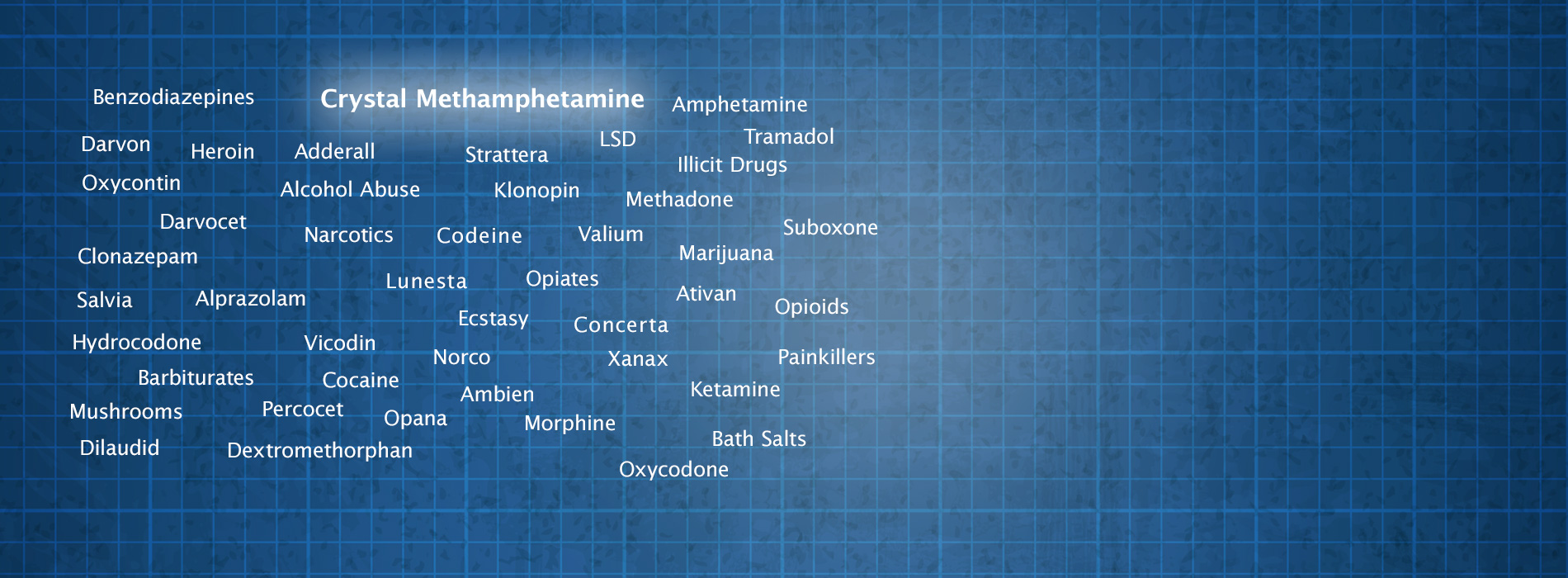Crystal Methamphetamine
Crystal methamphetamine, also called methyolamphetamine or desoxyephedrine, is in the form of the chemical n-methyl-1-phenyl-propan-2-amine. On the street, it is simply known as “meth.” In the crystalline form, this drug is known as Ice, Tina, Glass, or Crystal. Typically, users smoke this drug in a glass pipe, but it is often dissolved in water and injected, snorted, or swallowed. Many women use crystal meth to lose weight, but the effects are usually short term. The body grows a tolerance to this drug, so the weight loss stops after six weeks of regular use.
According to a recent survey by the National Institute on Drug Abuse (NIDA), over 12 million people in the U.S. have tried methamphetamine at least once, but over 1 million people used it on a regular basis the year prior to the 2012 survey. There are serious psychological, medical, and social consequences associated with methamphetamine abuse, as it can lead to memory loss, psychotic behavior, malnutrition, and serious dental problems. This drug also contributes to an increased risk of obtaining a blood-borne disease, such as hepatitis or HIV.
Crystal methamphetamine increases dopamine, a powerful neurotransmitter, which is involved with motivation, reward, pleasure, and motor function. This drug has the ability to release the dopamine rapidly, so the brain produces a quick “flash” of reward. This leads the user to become addicted and experience chronic relapses and compulsive drug seeking behavior.
Many methamphetamine users enjoy this drug because it produces a long-lasting high and causes numerous neurotransmitters to be released in tissues of the brain, which leads to a sense of euphoria. That high often lasts up to 12 or more hours, depending on the person and how the drug was originally taken. As a popular stimulant drug, crystal meth improves energy, concentration, and alertness, but decreases appetite and fatigue. Many meth users report an increased enjoyment in sexual activity and libido.
There are several associated effects linked to pure methamphetamine use. Crystal meth is never pure, so the dangers associated with this drug go beyond regular side effects and known signs. Commonly reported immediate effects include:
- Diarrhea
- Nausea
- Euphoria
- Increased alertness and energy
- Loss of appetite
- Insomnia
- Jaw clenching
- Increased libido
- Elevated heart rate, blood pressure, body temperature, and blood sugar levels
The effects of chronic use include tolerance, temporary weight loss, drug cravings, rapid decay of teeth (“meth mouth”), and drug-related psychosis. When a person overdoses on crystal meth, they experience a sense of flesh crawling, paranoia, delusions, hallucinations, brain damage, muscle breakdown, cardiac arrest, stroke, and/or hyperthermia.
Methamphetamine is available by prescription for attention deficit hyperactivity disorder, obesity, and narcolepsy. This street drug is made in illegal labs in homes, however. The making of crystal meth involves use of pseudoephedrine or ephedrine, which is in allergy and cold medicines. The “red, white, and blue process” is where red phosphorus, white ephedrine, and blue iodine are used to make hydroiodic acid. This type of drug is highly dangers, as the phosphorus with sodium hydroxide produces a poisonous phosphine gas, which can autoignite or blowup in the home. In addition to these substances, makers often use ether, chloroform, acetone, ammonia, methylamine, hydrochloric acid,lithium, and/or mercury to make crystal meth.

